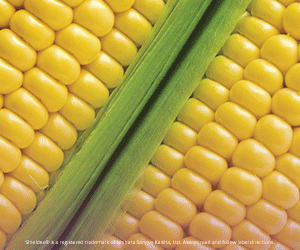The future of food and farming
NEW REPORT OUTLINES SOLUTIONS TO THE MYRIAD OF CHALLENGES FACING GLOBAL FOOD PRODUCTION
the need to produce more food sustainably has become a major issue around the globe. A UK report published earlier this year focuses on the world’s ability to feed a growing population with diminishing resources and presents several solutions.
The Global Food and Farming Futures project, undertaken by the UK government’s Foresight program, explores the increasing pressures on the global food system between now and 2050. The report highlights the decisions that policymakers need to make today and in the years ahead to ensure that a global population rising to nine billion or more can be fed sustainably and equitably.
The project involved approximately 400 leading experts and stakeholders from about 35 countries around the world. One of the experts, Dr. James Muir, was in Ontario this fall to present the report’s findings to the International Federation of Agricultural Journalists congress.
Muir, an international development and research advisor with the University of Stirling in Scotland, says the goal of the project was to offer more tangible and concrete suggestions about what is happening in the food sector and what we need to do.
“Producing the report was not going to solve all our problems, but rather set out in a broad framework a practical way of moving forward and addressing these issues,” he says.
The project analysed five key challenges for the future including balancing future demand and supply sustainably; ensuring there is adequate stability in food prices; achieving global access to food and ending hunger; managing the food system’s impact on climate change; and maintaining biodiversity and ecosystem services. The report concluded that the current food system is failing on sustainability and failing to end hunger.
proposed solutions
One of the key messages from the report is that we need to build our research and development capacity, says Muir. “Investment in agricultural research and development, and linking it with environmental goods and services and social impacts, is important,” he says. “We need to build up extension capabilities and give farmers better access to choices, and look at ways to reduce their risks.”
Food also needs to be brought more centrally into the picture, says Muir, and we need to link food to public health campaigns. “In some countries this has been marginalized over the past decade or so because food has been cheap and available,” he says. “And at the same time we’ve seen increasing health problems associated with inappropriate consumption.”
In Canada, where you have a large urban population, urban issues tend to take precedence and food falls off the map, says Muir. “There’s a growing separation between the producer and the consumer and we need to help consumers make the connection between food and farming,” he continues.
Muir suggested that people need to be a little more passionate about their food. They need to care about the food they buy by not wasting it, he says, and appreciate food that is produced well and has good nutritional value.
This includes food that is produced both organically and conventionally. The report studied both methods of agriculture. “Organic agriculture has its benefits but it’s not the only solution. We can’t do everything by going down that road,” he says. “And GM will contribute some very important parts of what agriculture and food production will be in the future, but that alone will not be the solution either. We need to have an open and balanced approach and tailor our systems to our local conditions.”
The report also touched on climate change saying agriculture and the food system must be taken into account in climate change negotiations. The world needs “climate smart agriculture,” says Muir. “We have to use research, practical experience and new ideas to develop the best ways to move ahead so farmers can respond more effectively to climate change,” he says.
Muir hopes Canadian farmers will be encouraged by the solutions presented in the report. “Whether you’re a large scale grain farmer or a small farmer servicing local markets, the primary message is the same – that food and farming is too important to be ignored,” he says.
For more on specific solutions, check out the Web Special article Solutions to the Challenges Facing the Global Food System.
changing diets
Gary Sharkey, head of wheat procurement for Premier Foods in the UK, concurs with the report’s findings. He says the changing diet in Asia is increasing the demand for raw materials as people become more affluent and move from cereal-based diets to meat-based diets. For example, in 2008 there was 346 million pigs in China and that number has increased by 20 million in the past three years.
The global demand for food has increased every year for the last five years, says Sharkey. “If you take that trajectory forward, we need to produce a world record wheat, corn and soybean crop every year for at least the next five years,” he says.
This means more acres have to be grown. Sharkey doesn’t expect additional wheat acres to be grown in the EU or the US. The area where he can see increased production is the former Soviet Union. “Unfortunately, the problem with the former Soviet Union is logistics. They don’t have the volume of rail cars to move the volume of wheat they grow,” he says, adding this has led to an increase in rail freight prices which offsets farm gate prices. “So there’s no real incentive for them to plant additional wheat acres,” he says.
Sharkey also agrees that more funding is needed for agricultural research, specifically wheat research. “We don’t need any higher quality wheat in the world, we just need a bigger quantity of it,” he says. “In order for wheat to remain competitive with other crops we need to see yield increases.” •







